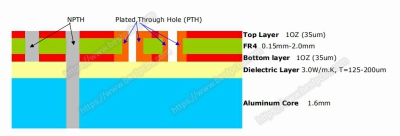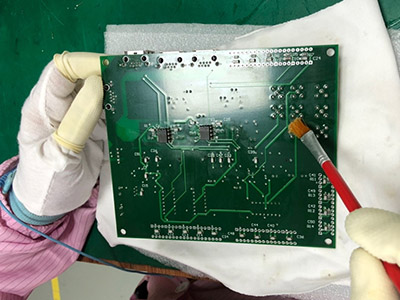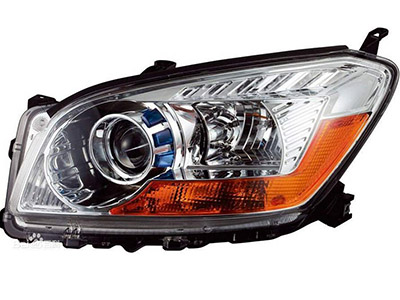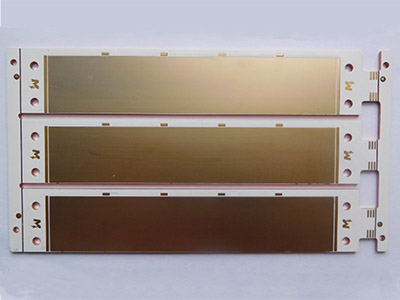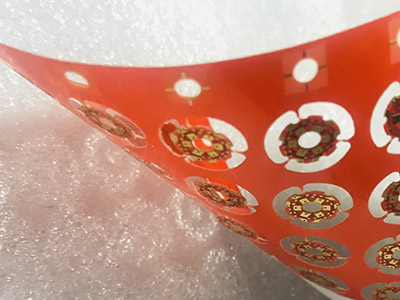Metal core printed circuit boards(mcpcb) are suitable alternatives for FR4/CEM1-3 variants. These circuit boards use metal as a core base material and are differentiated on the basis of their construction. There are a few types such as single layer, double layer, double sided, and multi-layer PCBs. What are heavily used in advanced electronic circuits are the double layer and double sided metal core printed circuit boards. These two types arise confusion due to their similar names. What are the differences between both? What advantages do they offer? Now you can get the answer from the following description.
Definition of a Double Sided and Double Layer MCPCB:
The double sided MCPCB and double layered MCPCB have different layout, due to the positioning of a metal core:
In a double sided MCPCB, the metal core lies in the middle of two conductor layers. There is also a dielectric layer between the metal core and a copper layer. The metal core and conductors are connected to each other through Vias. The SMD can be populated at the bottom and top.
A double layer MCPCB has a metal core at the bottom, with two conductor layers on its top. In short, the conductor layers lie in same side of the metal core. Generally, metals like aluminum, copper, and iron alloys are used as metal cores. The dielectric layer lies between a copper layer, and the bottom metal core. The SMD can only be populated on the top.
Advantages of Double Sided MCPCB and Double Layer MCPCBs:
Both these variants offer the same benefits as other metal core PCBs. They are as follows:
Reliable Performance at High Temperatures: Many double sided CEM3 or FR4 PCBs with high power and density face difficulties in heat dissipation. The CEM3 or FR4 material have weak thermal conductivity, which means the electronic components are destroyed at high temperatures. However, double sided metal core circuit boards feature a metal core, which has an excellent inter-layer insulation and thermal conductivity. Both these factors contribute to its reliable performance at high temperature.
Excellent Thermal Expansibility: Thermal expansion and contraction is an important feature of all objects. The ability to contract with cold, and expand with heat is termed as coefficient of thermal expansion. Most FR4 PCBs have low CTE, which means they cannot effectively deal with issues of contraction and expansion. However, both double sided and double layer PCBs can effectively deal with thermal expansibility. Thus, they are in demand.
Applications of Double Sided MCPCB and Double Layer MCPCBs:
LED lights
Street and general lighting
Industrial controls
Power monitoring devices
Automotive
Amplifiers
Test equipment
The choice of the either type will depend on your application requirements. If you are still confused about the two types and their benefits for your application, you can always approach an industry expert or a reliable metal core pcbs manufacturer like Best Technology, which provides different types of MCPCBs in diverse specifications.


